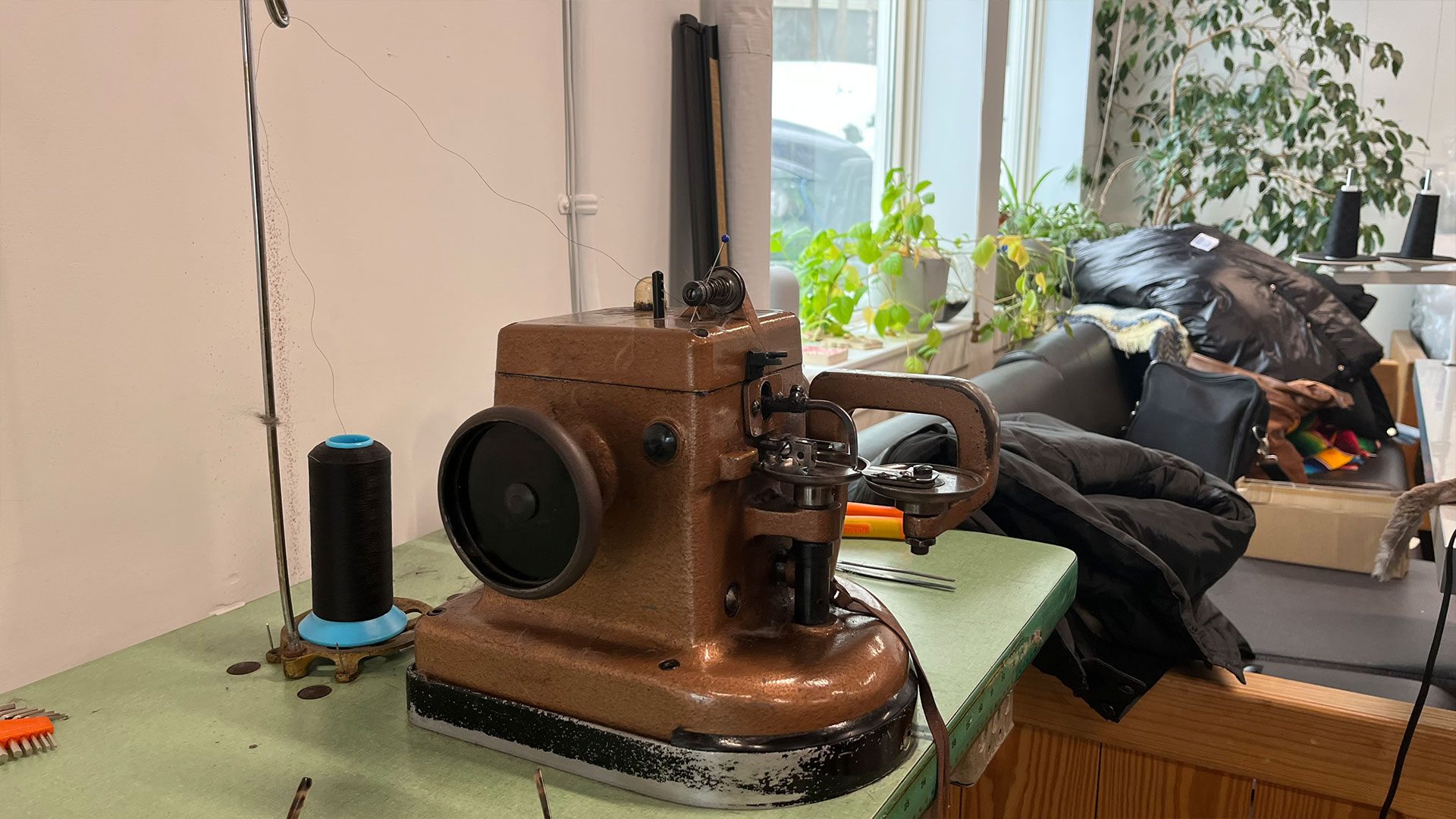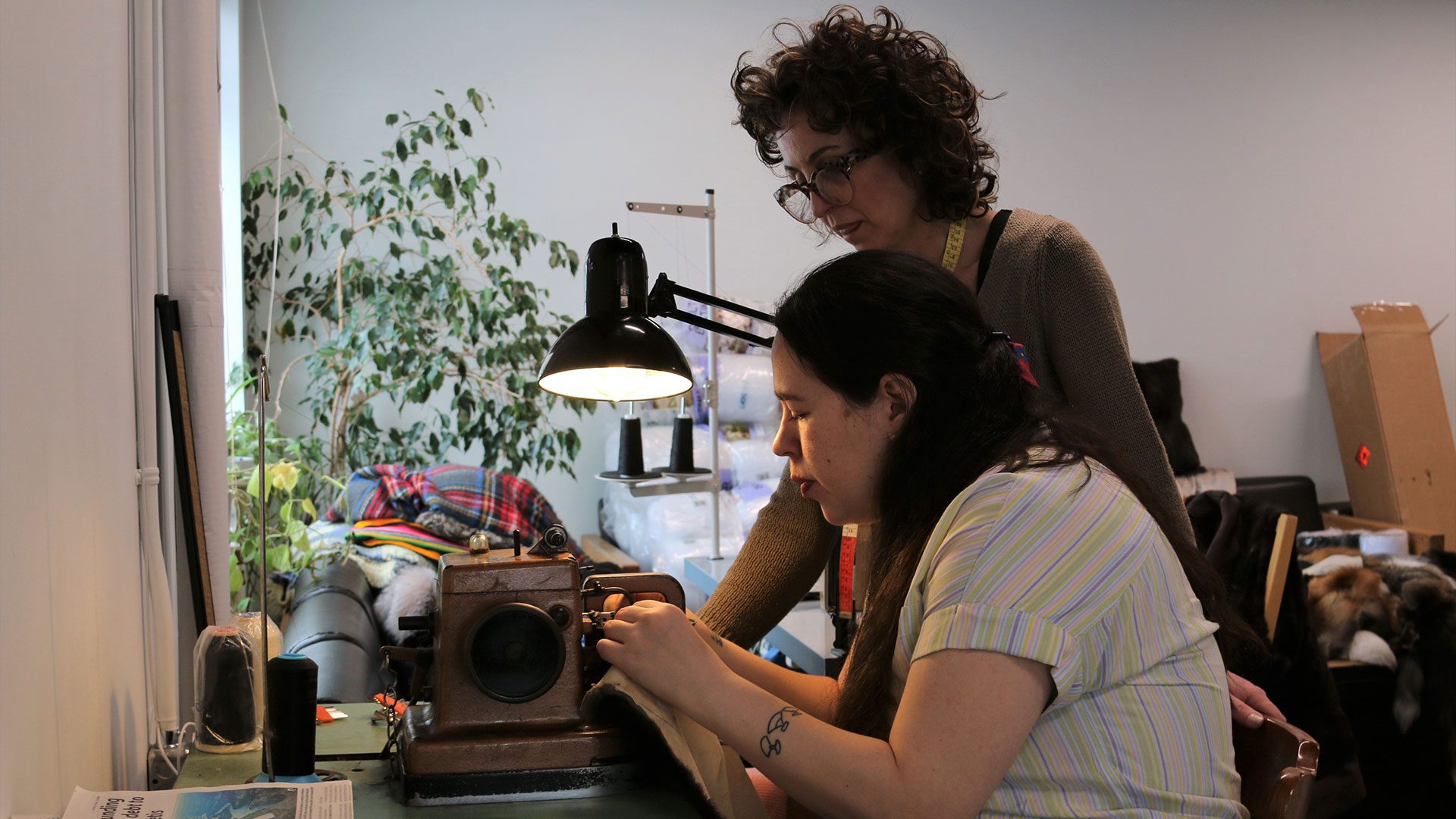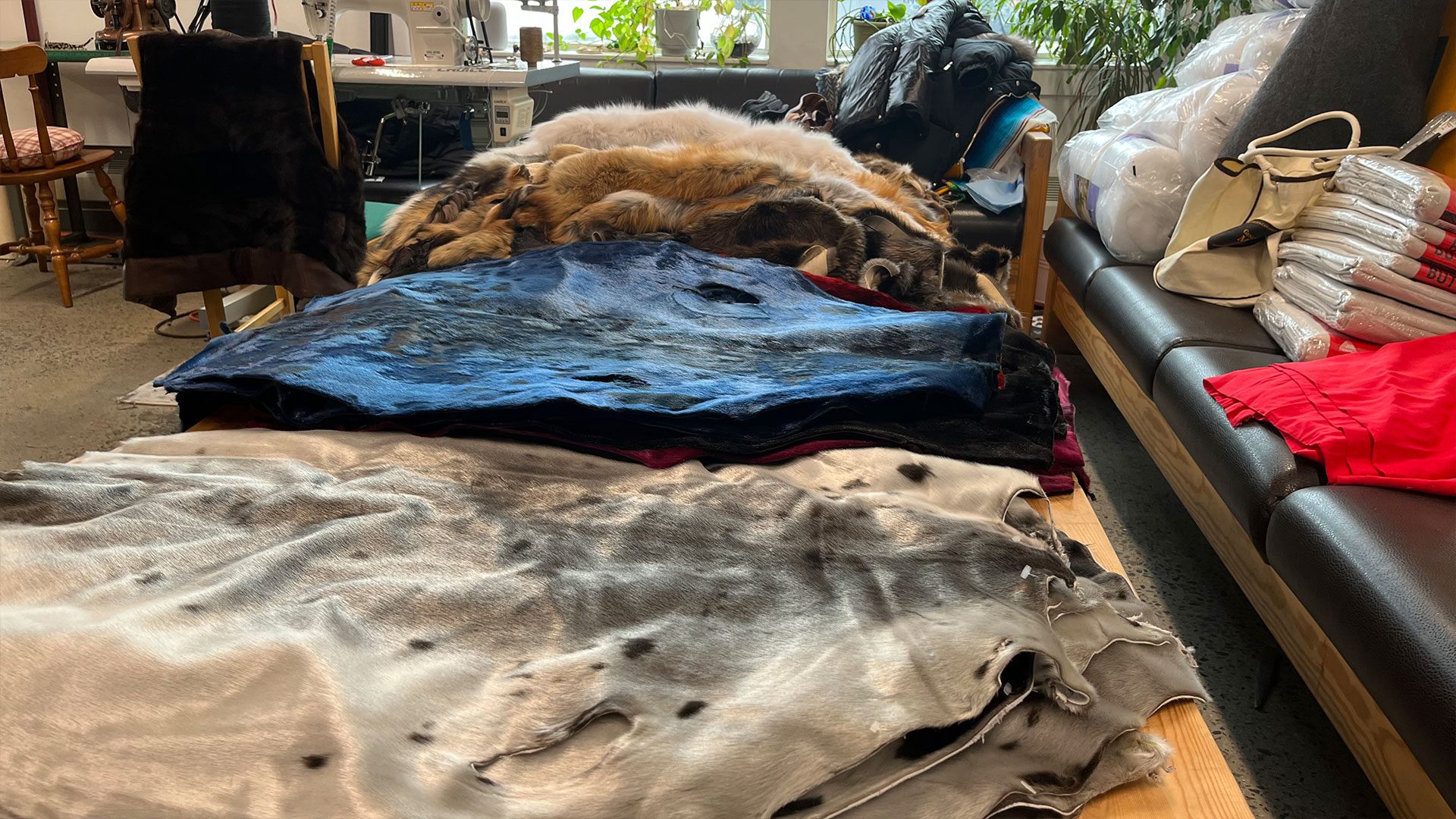Alissa Landry squats down to be eye level with a few dozen leopard-spotted sealskin pelts. She’s sorting them from lightest to darkest.
“I didn’t know sealskin had different kinds of shine,” she said. “There are no underfurs, so you literally see the different colours when you lay them out. Same with the beaver furs, when you stand up they look similar but when you lay them down you can see the difference between a dark skin and a red skin.”
To most, every pelt is perfect – but Landry is part of a group at a class at MakersSpace in Yellowknife learning the finer points that northern traditional artists look for.
For instance, they see colour, light, shine and character. These are important qualities that help determine what kind of story they will tell in their creations.
Landry is a returning participant. Originally from Gjoa Haven, Nunavut, she’s living and sewing items like kamiks in Yellowknife.
“As a little girl I was taught how to make my own pattern, and with a parka I know I need 2.5 metres of fabric for myself, but I’m learning fur is a fabric and not just a textile and your pattern determines the size of your skin, and you can get more out of fur,” Landry said.
Students here are learning new blocking techniques for fur. For many, it will allow them to use upwards of 30 per cent more of the pelt.
The territorial and federal governments sponsored the program.
Johanna Tiemessen, manager of Arts Programming and Traditional Economy for the N.W.T., says skills acquired at the workshop could change the way artists consistently produce products and result in increased revenue.
“Having a contemporary way thinking of things like, how would this be seen on the runway and how can I how can I produce a panel of a garment that’s going to catch the eye in New York or in Europe somewhere,” Tiemessen said.

Tiemessen said most artists in the north work with fur and the territorial government has been working to teach them how to consistently price work and work with galleries and online platforms in a hybrid model.
For Bambi Amos, Inuvialuk originally from Sach’s Harbour, the workshop is also a train-the-trainer opportunity as she prepares to teach traditional art methods to folks in Inuvik, N.W.T.
“I just started researching lessons plans and I’ve been asked in the past but now that I’m doing my business [Bambi’s Traditional Arts] full time I feel like it’s perfect timing for me to share what I know,” Amos said.
While most techniques to catalog furs have remained the same, students are being to incorporate new tools such as tracers, knives, glues and more.
Amos says it is the first time she and most of the students have used a furrier machine, streamlining sewing furs by hand and saving artists precious time.
“I think combining traditional knowledge with new ways of doing things is a challenge, but you have to be open-minded, you have to want to learn and evolve,” she said.
The government has donated one furrier machine to the town of Inuvik and another to the Maker’s Space in Yellowknife, allowing the students to continue practicing.

Master furrier and instructor Panos Panagiotidis said that overall the fur industry is struggling due to public perceptions around fur and a lack of knowledge about fur practices and ethics, especially when it comes to the sustainability of Indigenous furs.
“I think what the fur industry has not really done is it did not go out there and share the information,” Panagiotdis said. “I was brought up back home in Greece learning that the Canadian economy was built up on the fur trade so why not bring it back there, why are we forgetting this.”
With over 30 years of experience as a furrier, Panagiotidis says it is a rewarding experience when he witnesses what he calls ‘aha moments’ in the classroom.
“When students start to see how much mathematics is involved and how geometry helps them solve problems while still being creative, that’s an aha moment,” he said.

Camellia Gray of Inuvik said that she now feels comfortable adding furs other than sealskin to her repertoire.
“You look at Inuvialuit culture and can go way back and see how they used every part of the animal,” Gray said. “I have my mum’s fur machine which hasn’t been used in over 30 years but going to look at getting it repaired and using it.”
Gray has learned the process of choosing and creating with furs is not a race, but a marathon, where practice makes perfect.
“Don’t push yourself and give yourself time to look at the pattern, find out the colors from shine into darkness because you know, it’s so interesting,” she said.










